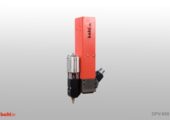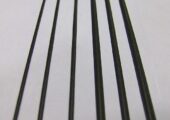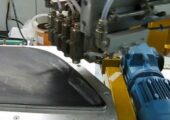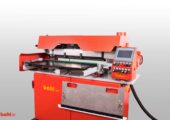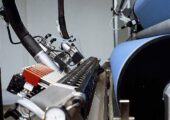Hotmelt Technology
/
APPLICATION TECHNOLOGIES
balti has a wide and constantly expanding range of application techniques, which covers practically all required applications and coatings.
In addition to the traditional and rather simpler techniques of filling hollow bodies as well as spot and bead application, there are above all the two-dimensional application variants (contactless spraying and spraying, roller, slotted nozzle), in which there are countless forms and techniques, which are constantly being improved and expanded. The materials to be bonded, shapes and access possibilities together with the requirements on the final product limit the possibilities and together with the application environment determine the possible technology. balti supplies standard equipment and application units as well as complete automation systems.
- Point application / Bead application / Filling application
- Spray application (laminar 1)
- Roller application (laminar 2)
- Slot nozzle application (laminar 3)
balti has a wide and constantly expanding range of application techniques, which covers practically all required applications and coatings.
In addition to the traditional and rather simpler techniques of filling hollow bodies as well as spot and bead application, there are above all the two-dimensional application variants (contactless spraying and spraying, roller, slotted nozzle), in which there are countless forms and techniques, which are constantly being improved and expanded. The materials to be bonded, shapes and access possibilities together with the requirements on the final product limit the possibilities and together with the application environment determine the possible technology. balti supplies standard equipment and application units as well as complete automation systems.
Adhesive is applied with a round nozzle from one or more heated adhesive valves connected in parallel. Depending on the type of adhesive and the required application quantity, the appropriate valve with nozzle is selected for a desired environment. Nozzle inner life, tip and length together with the application method (manual, automatic, distance to application area, application speed) result in a corresponding application pattern. balti has three pneumatically controlled basic valves according to the valve gate system and countless standard as well as special nozzles in its product range. There are also displacement neutral valves according to the "ball valve principle".
Especially for longer nozzles a nozzle heating is recommended. If the adhesive tends to form threads, which could be deposited on visible surfaces when driving away, balti can offer various solutions.
Adhesive can be sprayed on without contact, but this applies more to low-viscosity hotmelt, or it is applied" by the majority. This means that the nozzle carries e.g. an adhesive bead with a certain "flying height". (distance nozzle tip to application surface). The bead can also be deliberately pressed into the width during the application (flat bead: output quantity > application gap).
The spray technique is probably the oldest and most widespread of the methods applied to the surface. Early on, attempts were made to "atomise" hotmelt by means of air support. But unfortunately, this simple and tempting technique does not work quite as well with much higher viscosities such as those of paint, dispersion or solvent-based adhesives. Especially with reactive adhesives, with relatively large fluctuations in adhesive consistency, spraying is always a challenge. This application method is indispensable for any flat application on unshaped or even 3D parts. balti offers a large number of different systems, valves and nozzles. By means of kinematics, mostly air-supported, the adhesive can be applied without contact. Depending on the consistency of the adhesive, droplets, thread pieces, endless threads etc. are produced. With the appropriate nozzle shape, a wide variety of patterns can be produced, such as curls, "fine fabric", figure-eight loops, etc. The spray jet is more or less wide for a certain adhesive depending on the nozzle shape, air volume and distance between nozzle and substrate.
Especially for flat cut parts, but also for continuous material, the adhesive can be applied with a roller device. A thin film is generated on the application roller. Where the substrate touches the roller, the adhesive is transferred to its surface.
Basically two different roller techniques are offered: closed system with roller/doctor principle or the "open principle" with roller and metering roller, where the adhesive is between the rollers. balti uses the first method mostly for smaller systems up to 1m application width. Hard boards as well as soft and flexible foils, textile-, foam laminates etc. can be transported semi-automatically (manual loading/removing) or fully automatically through the system, whereby a separately driven counter roller adjusts a gap corresponding to the substrate and presses this against the application roller.
Find out why many adhesive manufacturers and laminators swear by balti technology!
Analogous to the round nozzle, the adhesive is directed to the slotted nozzle, but is applied to a flat material in a certain width as a result of the nozzle design. The slotted nozzle is at least as wide as the desired application width. Depending on the application and adhesive type, the nozzle is designed accordingly so that this film is distributed over the entire width and flows evenly out of the nozzle gap. Even if certain application segments can be switched on and off or adjusted via the nozzle width (e.g. total application width) and the start and end of the application can be controlled with upstream valves and dosing pumps, the result is practically only rectangular application patterns.
Nozzle technology from balti:
- from a few millimetres to > 2 metres
- from a few gr/m2 or layer thicknesses from 0.01 mm to x mm from low to extremely high viscosity adhesives and sealants or even any 1 and 2K media and liquids
- unbeatable and "first choice" especially for reactive media, as hermetically sealed and controlled flow is guaranteed
- from continuous to intermittent job images
- from extremely slow up to high speed applications of 50 m/min
- from large area applications on paper, foil, fabric etc. to wooden edges or book spines


